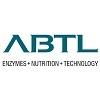Explore all the information on
Poultry gut health
The efficient conversion of feed into its basic components for optimal nutrient absorption is vital for both broiler and broiler breeder production and welfare. Gut health, an intricate and complex area combining nutrition, microbiology, immunology and physiology, has a key role to play. When gut health is compromised, digestion and nutrient absorption are affected which, in turn, can have a detrimental effect on feed conversion leading to economic loss and a greater susceptibility to disease. In addition, recent changes in legislation on the use of antimicrobials, differing feed requirements and more efficient birds highlight the need for a better understanding of gut function and gut health.
Michael Kogut, Food and Feed Safety Research Microbiology at the United States Department of Agriculture (USDA), speaks to us about the importance of microbiome modulation on intestinal health in poultry, during the Intestinal Health Workshop, supported by DSM Nutritional Products, at the North Carolina State University.
...
Comments : 2
Recommendations: 1
...
Comments : 0
Recommendations: 0
...
Comments : 0
Recommendations: 2
...
Comments : 0
Recommendations: 0
...
Comments : 0
Recommendations: 0
...
Comments : 0
Recommendations: 2


Overview of Performance of Listed Vitamin Companies in 2023
Suggested link
The on-going battle against African Swine Fever and Covid-19 have caused major challenges globally affecting both food production and food security. This has been very evident in swine production, as most top pork producers and exporters were affected. Spain, being the top pork exporter, was among the first countries to be hit by the Covid-19 pandemic causing disruptions in pork supply not only to its exports but also affecting domestic supply in EU as well. This has also significantly...
Comments : 0
Recommendations: 1
...
Comments : 0
Recommendations: 0
.jpg&w=3840&q=75)

Best Practices for Sustainable Waste Management and Environmental Solutions
Suggested link
...
Comments : 1
Recommendations: 1
...
Comments : 0
Recommendations: 1
...
Comments : 0
Recommendations: 0
...
Comments : 0
Recommendations: 1
...
Comments : 0
Recommendations: 1
...
Comments : 1
Recommendations: 3


Effective Solutions to Manage Poultry Heat Stress for Better Health and Farm Productivity
Suggested link
...
Comments : 0
Recommendations: 1
Necrotic enteritis is widely common and economically significant. It is caused by the proliferation of the Clostridium perfringens bacterium, associated and triggered by protozoans of the Eimeria genus, which preliminarily causes...
Comments : 6
Recommendations: 12
The use of probiotics in poultry has increased steadily over the years due to the higher demand for antibiotic-free poultry. The probiotics market was reached 80 million USD in 2018 and is projected to reach 125 million USD by 2025 at a compound annual growth rate of 7.7%. Introducing to you a product from ABTL named CosBac – Total Gut Health Solution, Multi-species with added Prebiotics. GUT HEALTH is the REAL WEALTH....
Comments : 3
Recommendations: 3
...
Comments : 0
Recommendations: 0
...
Comments : 0
Recommendations: 2
The aspects that are focused to increase profitability in poultry sector are feed and gut among which gut is the key feature. Gut health and functionality plays a key role on nutrition absorption, feed efficiency, productivity, development of immunity and overall health of birds. The gut health relies upon 3 important pillars which are: ...
Comments : 4
Recommendations: 5




.jpg&w=3840&q=75)


.jpg&w=3840&q=75)





.jpg&w=3840&q=75)

















